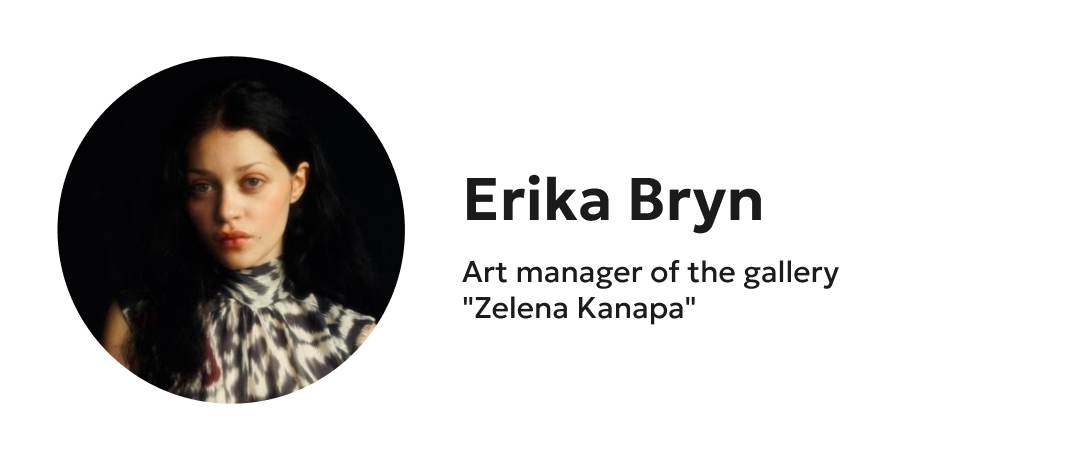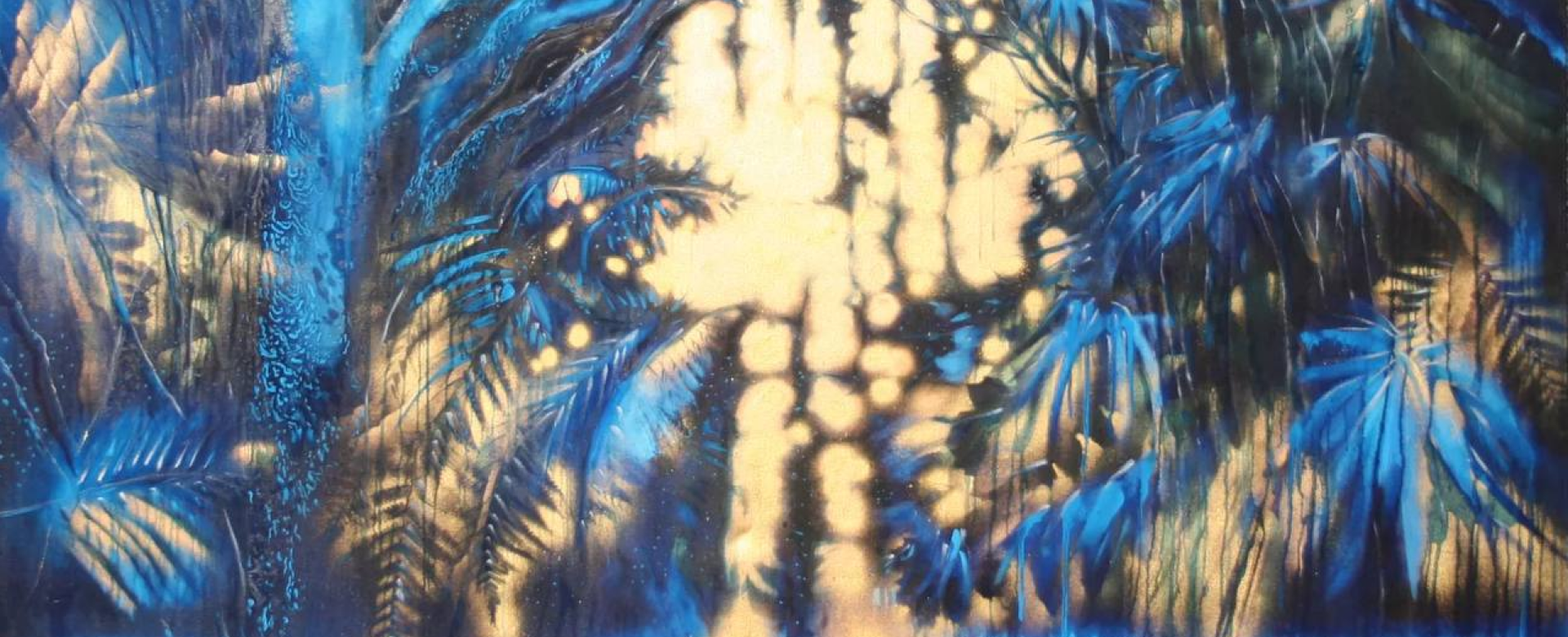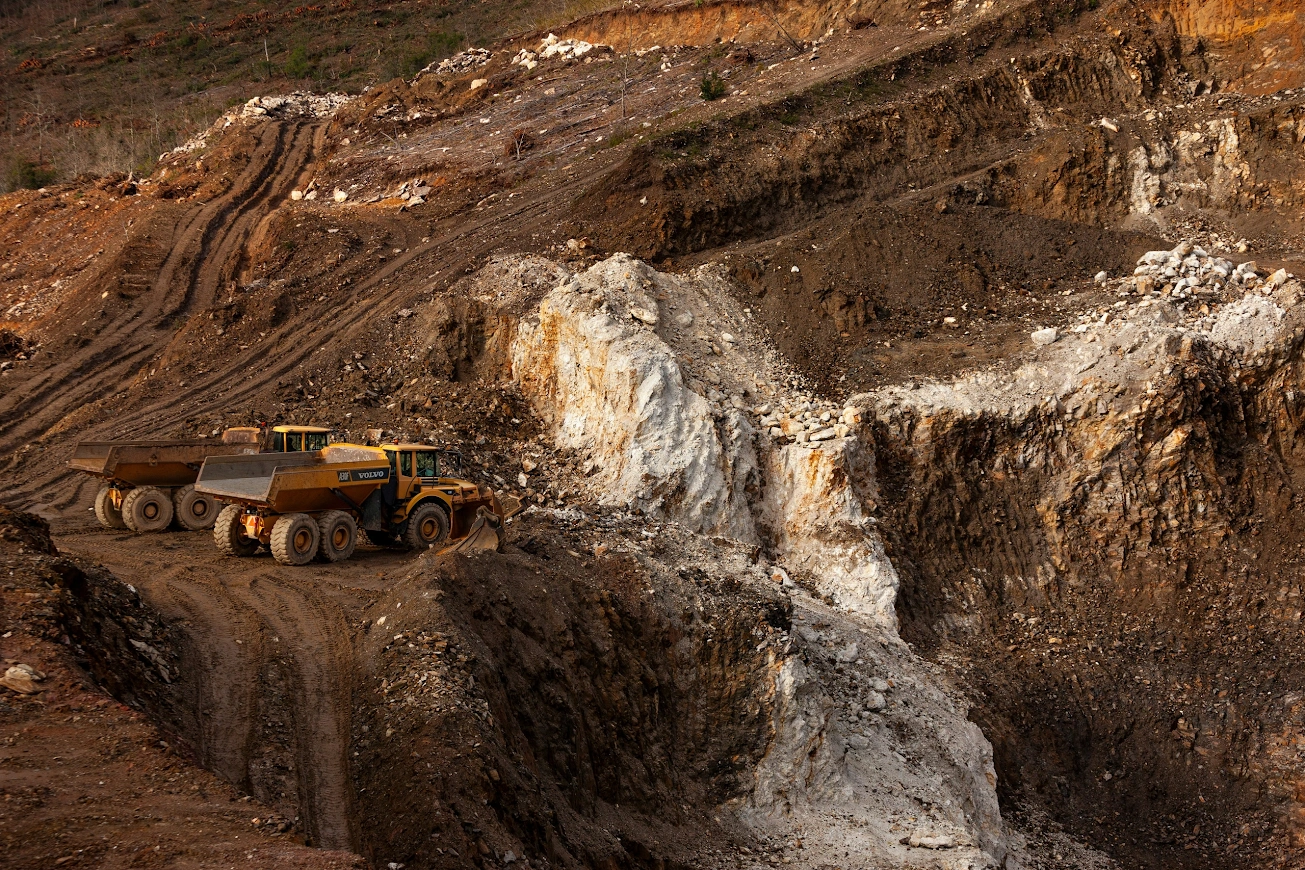Ukrainian art is rapidly capturing the attention of collectors and investors worldwide. Amid global economic shifts, new investment opportunities are appearing. The unique character of Ukrainian artists, their approach, and, most importantly, the pricing of Ukrainian art all contribute to making these works excellent assets.
In this article, we present the findings of research conducted by Molfar and the art platform Spilne Art. We offer an in-depth analysis of the Ukrainian contemporary art market and its trends, and a look at some promising artists. The article includes interviews with leading experts. Growing demand, international community support, and a gradual emergence onto the global stage mark only the beginning. What makes Ukrainian art so appealing, and which names hold the most significant potential?
Download the complete version of the study here.
Investment Potential of Ukrainian Art — Molfar Analytical Report
Art is an asset. At first glance, it may seem like something only for a niche group of aesthetes. In reality, contemporary art is becoming more accessible in price and meaning — at least if you have around $2,000 to invest. It may not provide quick returns, but it's a stable investment. Art is often seen as a "safe haven" for investments, with values that can outpace inflation, preserving or even growing capital. Plus, there's the added pleasure of enjoying the beauty of these paintings, sculptures, or graphic works.
In a comprehensive study conducted by analysts at Molfar in partnership with the Spilne Art platform, we answer some essential questions for those interested in investing in Ukrainian art. Today, investing in Ukrainian art helps spread awareness of its unique style and aids in preserving the works of contemporary Ukrainian artists. Many artists, like Nazar Bilyk, Zhanna Kadyrova, and Tiberius Silvashi, are already showcased at world-class exhibitions. Yet, the prices for their works remain relatively accessible. Below, we'll include a map showing where Ukrainian artworks are held worldwide. Their presence in leading galleries underscores the high trust in Ukrainian art.
We examined the work of 25 contemporary Ukrainian artists to identify key market trends and price dynamics. The study clearly shows that the growth of the Ukrainian art market has been stable since 1991, developing actively and expanding over the years.
“One of the reasons for conducting this research is cultural diplomacy. Russia invests significantly more in this area. We strongly desire more Ukrainian artists to be purchased. If they bought abroad and more are bought here, artists will have more opportunities and resources for creativity. Perhaps we can influence the diplomatic front somehow,” — Artem Starosiek, CEO of Molfar, said during the report presentation at kmbs.
It should be noted that this research showcases only a portion of Ukraine's contemporary artistic talent. The analysis is based on specific criteria and represents a selection of significant names.
The surge in interest in Ukrainian art in 2022 was driven by global attention on Ukraine, giving artists a chance to make their mark on the international stage. This propelled the rise in prices for their works. However, interest has since dipped after peaking, although many collectors and art experts believe this is only a temporary pause before the next wave of growth.
Next, we'll share insights from our research on the prospects of the Ukrainian art market and how to invest most advantageously. To start, let's review the critical points from experts.
“Ukraine has unique things that the world doesn't have” — insights from art experts
According to art manager Erika Bryn, the art market in Ukraine is still nascent. Ukraine inherited a "gray market" from Soviet times, where art outside socialist realism was mainly sold on the black market. Thus, the art market "arrived with Independence, but only began to operate actively 15–20 years ago." However, in 2022, according to the art manager of the gallery “Zelena kanapa”, an actual peak occurred.

“Despite the horror of the Russian invasion, it can be confidently said that 2022 was a year of euphoria surrounding Ukraine. It was a year when foreigners and citizens said, 'We want Ukrainian art in our homes and collections.' That year, the world's attention was intensely focused on everything happening in our country, including our art and culture. Lviv, in particular, due to its proximity to the western borders, hosted many volunteers, reporters, and journalists. Almost daily, foreigners from all over the world visit the 'Green Sofa' gallery. They asked questions, showed interest, bought pieces, and were amazed that such a rich culture had been 'hidden' from them for decades.” — Erika Bryn, art manager.
Still, experts cite war as the greatest obstacle to the art market's development.
“Many works are sold from private collections. We don't have a modern art museum in Ukraine as an institution that could establish a price range for Ukrainian contemporary art. Unlike in New York, there is no permanent exhibition of Ukrainian contemporary art. There, the institution plays a role in setting the prices for its artists and the collection that fills the museum. Here, pricing is different; it's determined by the artists who set the prices for their work. Prices are also set by dealers who sell the works,” — Oleg Vasylenko, Contemporary Art Collector, Curator.
During the interview, expert Oleg Vasylenko highlighted the need for more modern art museums. These institutions are vital in establishing the value of artworks.
“Many works are sold from private collections. We don't have a modern art museum in Ukraine as an institution that could establish a price range for Ukrainian contemporary art. Unlike in New York, there is no permanent exhibition of Ukrainian contemporary art. There, the institution plays a role in setting the prices for its artists and the collection that fills the museum. Here, pricing is different; it's determined by the artists who set the prices for their work. Prices are also set by dealers who sell the works,” — Oleg Vasylenko.
However, as collector Yuriy Komelkov points out, another factor in determining the art price is the artist's recognition or brand.
“You can set any price for any artist's work, which may never sell. However, the situation is entirely different when an artist becomes a brand. For example, Marchuk is a brand; Nazar Bilyk is already a brand. A brand commands a high price. Just as Andy Warhol is valued in the global market, it's not the work itself but his name that holds immense value. There are many such examples; any work from these artists is worth a lot. Take our Kazimir Malevich, for instance. I guarantee you: any piece of his that appears will be $100 million or more,” — Yuriy Komelkov, collector, head of the NGO “Museum of Avant-Garde” said.
Regarding market changes, expert opinions are divided, with some speaking of an effective freeze.
“At the beginning, when the full-scale invasion started, people became interested from a cultural heritage perspective. However, in terms of acquisition, the situation still didn't improve. In general, the prices of Ukrainian artists over these last two years have hardly changed. The market is somewhat frozen, so prices remain at the same level. This is a normal situation. After the war, they should increase,” — Anna Hodun, Manager of "Ya Gallery".
New directions in art and what's unique in Ukraine. Yuriy Komelkov highlights graphics as one of the art forms expected to increase in value. However, he believes others deserve attention, especially sculptures in glass, plastic, or synthetic materials.
“That same Nazar Bilyk began working with glass and plastic, using synthetic materials. This isn't a traditional technique for sculpture, as it used to be bronze, stone, or wood, but now everything has changed. These new directions are in the highest demand among collectors and fetch the highest prices. There are few artists like Nazar Bilyk, so demand is insane. As for painting, it isn't easy to develop anything new. Everything has already been invented. But there are certain artists—the same Kryvolap, for instance—he's a fantastic artist working with color. Marchuk, who invented ‘plontanism.’ The world doesn't have these unique things, but Ukraine does,” — says Yuriy Komelkov.
International Support for Ukrainian Art
One vivid example is the Kaleidoscope of (Hi) Stories exhibition held in Dresden, Germany, which showcased hundreds of works by Ukrainian artists from 1912 to 2023. Another equally significant event was the Beast of War, Bird of Hope exhibition in Washington, which featured works by Ukrainian artists created during and after the full-scale Russian invasion.
Maria Prymachenko's work was presented at the “Beast of War, Bird of Hope” exhibition. Source:Aspen Institute
There are also examples of international support for Ukrainian art. In 2022, the European Union allocated €5 million through the Creative Europe program. These funds were directed towards preserving and developing cultural heritage, helping artists and cultural organizations continue their work in Ukraine.
A more recent example from 2024 comes from UNESCO, which announced funding for 14 new projects in Ukraine, four aimed at supporting the creative sector. The revival of the support program for Ukrainian artists in the Netherlands also marked a significant step towards strengthening international cooperation. This program provides funding for Ukrainian artists. This allows them to continue their creative work, participate in film projects, and perform arts.
Thus, at least several examples of the international community declaring support for Ukrainian art and directing funds to the Ukrainian cultural sphere.
What influences prices, and which artists should one invest in?
In short, two key factors influence prices—the artist's name and the work's uniqueness. This summary reflects insights from art experts, gallery owners, and exhibition managers highlighted in our research. Essentially, the more well-known the artist and the more unique the work, the higher the price. However, this is a simplification; the realities of the art market are much more complex.
According to Art Basel's 2024 global report, the international art market is valued at $65 billion. Galleries and dealers with an annual turnover under $500k saw the highest sales growth (11%). In comparison, those with turnovers exceeding $10 million experienced a 7% decline. Dealers encounter cautious buyers regarding high-priced art, with more affordable works selling better.
Molfar and Spilne Art's study of Ukraine's art market reveals that the minimum cost of an artwork to enter the art investment market currently stands at $2,000. This benchmark is not merely a minimum threshold but serves as a guideline within contemporary art. Such pieces begin to enter the category of investment assets, indicating stable demand for the artist's works and potential for price growth.
_1731673078.png)
"Art pricing is typically based on objective factors, interwoven with subjective elements. Some aspects are easy to predict, while others are nearly impossible—and this must be considered. Objective indicators include auction sales, public and museum collections representation, and exhibitions in reputable galleries. Subjective factors involve media activity, participation in public events and discussions, relevance of the themes addressed, and influence on public opinion.
Our analytical partners at Molfar tried to evaluate both objective and subjective factors. We've achieved a relatively realistic view of which Ukrainian artists are currently at the forefront and most interesting for collectors," — said Natalia Tkachenko, founder and CEO of Spilne Art.
The art market also has an emotional purchase factor. A striking example is 2022, when, as art experts mentioned, international interest in Ukrainian art significantly increased.
Art prices can rise due to emotional factors and market changes, such as increased collector interest or the emergence of new works at auctions that capture public and critical attention. Considering the high percentage of online sales, art is becoming more accessible to a broader audience, which can also drive price growth. Online sales and auctions further contribute to this trend.
_1731673619.png)
"One should buy in a declining market. That’s an obvious fact. In reality, I would argue with the optimism and suggest that we are not growing as a market overall. But that’s a good thing. The Ukrainian phenomenon will be interesting one way or another, regardless of how our fate unfolds. I would encourage those interested to buy. However, it must be public — we must bring works to exhibitions and showcase them where we will stand alongside European artists. Essentially, now is a good time to buy," said Olga Sagaidak, a cultural heritage expert and Chair of the Board of the Coalition of Culture Professionals, during a discussion at the study presentation at KMBS.
Now, briefly about the study itself. Every aspect of an artist’s activity is assessed based on criteria developed from interviews with specialists and art historians and through consultations with Spilne Art.
The full version of the report is available to read and dowload on this page.
After researching and analyzing information from open sources and interviewing experts, scores were assigned for each criterion, which accumulated to determine the overall score. This approach allows for evaluating every aspect of an artist's activity.
The development of Ukrainian art has significant potential. Over the past decades, it has gradually emerged from the shadows, and the market has gained stability, becoming increasingly attractive to investors. However, 2022 changed everything. The onset of the war drew the world's attention to Ukraine, sparking heightened interest in its cultural heritage, including art. Prices for works by Ukrainian artists surged sharply. Although the initial excitement has gradually subsided, the global market remains interested.
Despite the market freeze due to the war, Ukrainian art continues to enter international exhibitions and cultural events, sustaining interest in Ukrainian artists. This points to the long-term potential and uniqueness of Ukrainian art. The map clearly illustrates that Ukrainian artists are now appearing abroad—most prominently in the EU, increasingly in the U.S., and also in Asian countries.
Our analysis offers a clear profile of Ukrainian artists, each thoroughly evaluated based on specific criteria, to help investors identify the most promising names. These criteria include exhibitions and the development of the artist's brand.
Overall, Ukrainian art is a powerful investment asset capable of protecting capital from inflation and supporting Ukrainian culture internationally. This interest in Ukrainian artists may become the key to a new cultural breakthrough.




